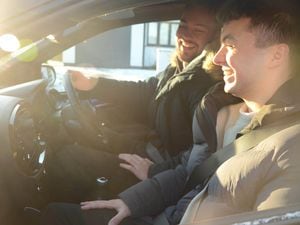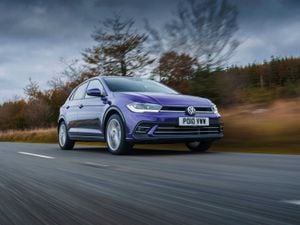How can young drivers keep themselves safe behind the wheel?
Some new tips can really help to boost safety when driving.

The festive season is a time when everyone likes to let their hair down. Be that with parties, meeting friends or family, or just having a little bit of a break from work at home, it’s a great opportunity to give yourself a breather as the year comes to an end.
For younger drivers, it might also be a challenging time behind the wheel. You may be ferrying people around or travelling to areas you’re not used to. With that in mind, Toyota and the Surrey Fire and Rescue Service have given out some advice on how young drivers can stay safe at this time of year.
Don’t mix driving with drink or drugs

>
Regardless of your age, you shouldn’t ever be getting behind the wheel if you’ve had a drink or used drugs. According to government statistics, in 2020 there were 6,480 deaths or serious injuries caused by drink driving, which goes to show the lethal consequences that it has.
These days, there are more non-alcoholic drink options than ever, so you don’t need to miss out if you’re driving. If you know you’re going to be getting behind the wheel, it’s best to avoid any alcoholic drinks whatsoever.
Make sure you’re belted up

>
Seatbelts are there for a reason. They’re there to ensure that you’re as safe as possible and can make all the difference in the event of an impact. However, government statistics show that while 94.8 per cent of UK drivers used a seatbelt in 2021, there’s still a minority who fail to buckle up.
The same report also shows that 23 per cent of car occupant fatalities in reported road collisions in 2020 weren’t wearing a seatbelt, so make sure that you’re always wearing one regardless of how short your trip is.
Don’t be tempted to show off

>
If you’ve recently passed your test then it may be tempting to show off your newly-found driving skills to friends. However, this could land you in some seriously hot water, with the consequences of speeding or dangerous driving being points on your licence and a fine of up to £2,500.
Remember also that if you get six points within two years of passing your test means that your licence will be taken away.
Take a break if you’re tired
Though it might be tempting to push through any tiredness in order to reach your destination, it’s not advisable. Tiredness and general fatigue means that you’re not operating in your peak area and it leaves your reaction times and decision-making skills at a slower level than usual.
So if you’re feeling tired, always stop in a service station or rest area and take a nap for 10 to 20 minutes.
Keep distractions to a minimum

>
Having a lot of distractions when you’re driving can prove extremely stressful. Be that a mobile phone ringing, loud music playing or multiple passengers chatting away, driving with distractions is tricky.
So to avoid any potential accidents, switch off your phone, turn the music down and ask your passengers to keep noise to a minimum – you can always chat when you’re at your destination.
Look out for vulnerable road users

>
There may be more vulnerable road users out and about during the festive months, be that cyclists, pedestrians or horse riders. Give cyclists and horses plenty of space – at least 1.5 metres for bike riders and two metres for horses – and take your time when passing, there’s no rush.
Don’t assume that pedestrians have seen you, either, and always be prepared to slow and stop, particularly in urban or congested areas.
Take responsibility
Paul Fisher – paramedic and Operating unit manager for South East Coast Ambulance Service said: “I think the most important thing is to avoid unnecessary distractions, making sure that you have got your mobile phones turned off, that you are in a safe state to be able to drive, and ultimately, taking responsibility.
“Being that person in the driver’s seat, it’s not only the responsibility that you’ve got for yourself, but it’s for the others in the car and others outside of your own car as well.”





